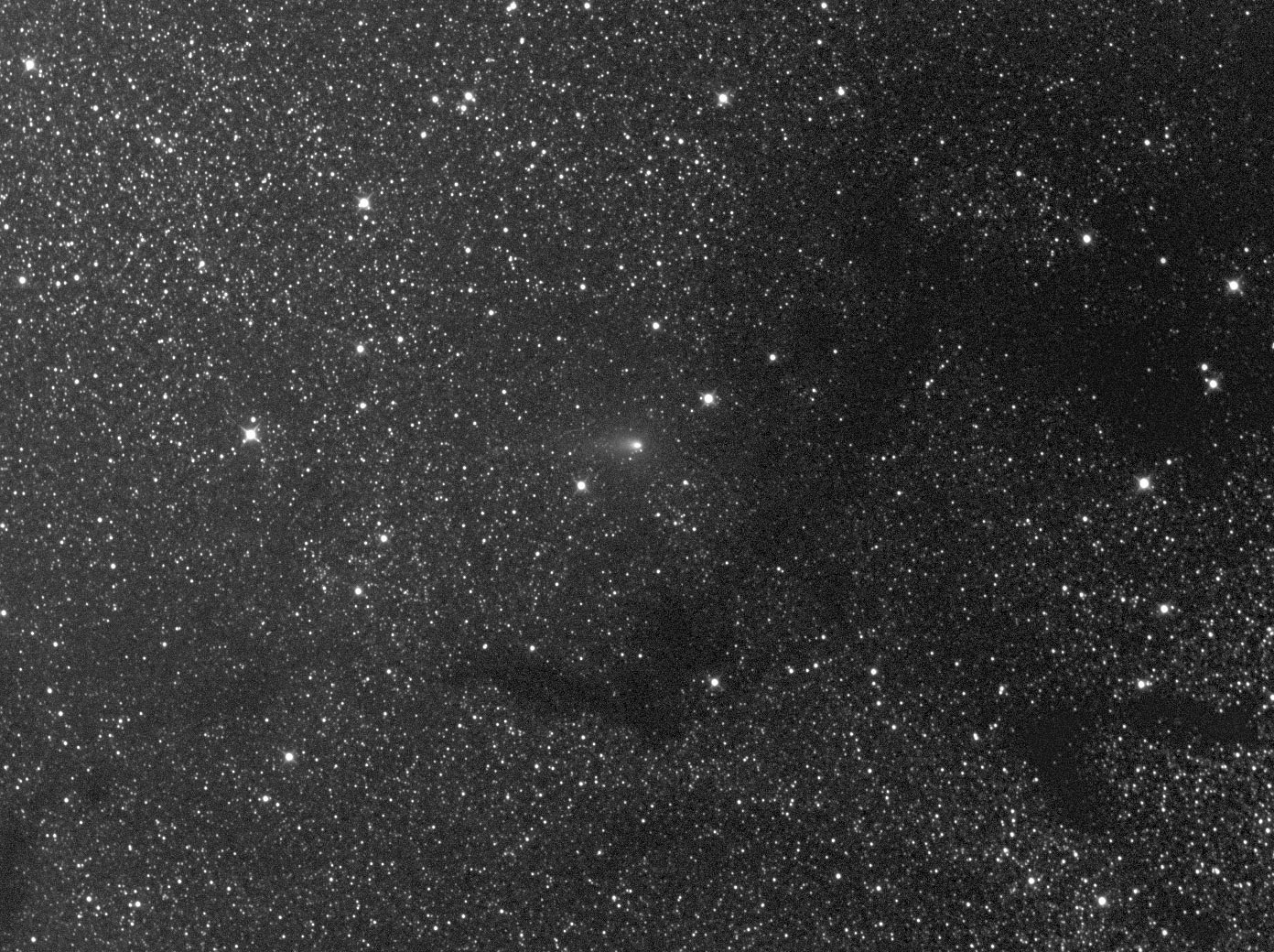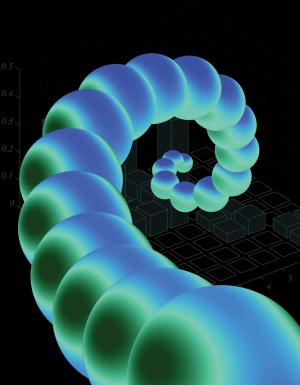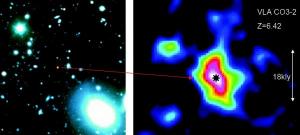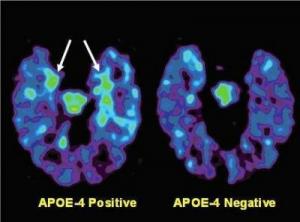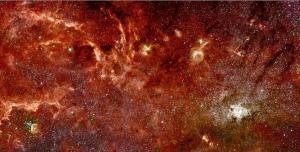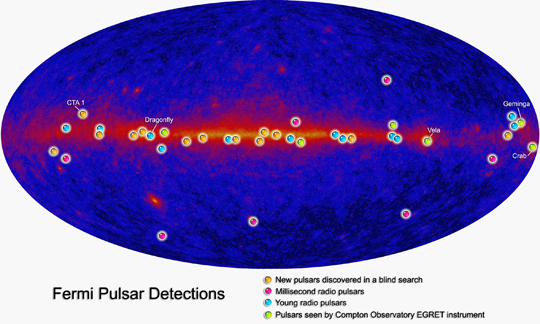
© NASA/Fermi/LAT CollaborationNASA's Fermi Gamma-ray Space Telescope has found 12 previously unknown pulsars (orange). Fermi also detected gamma-ray emissions from known radio pulsars (magenta, cyan) and from known or suspected gamma-ray pulsars identified by NASA's now-defunct Compton Gamma-Ray Observatory (green).
Greenbelt, Maryland -- NASA's Fermi Gamma-ray Space Telescope has discovered 12 new gamma-ray-only pulsars and has detected gamma-ray pulses from 18 others. The finds are transforming our understanding of how these stellar cinders work.
"We know of 1,800 pulsars, but until Fermi we saw only little wisps of energy from all but a handful of them," says Roger Romani of Stanford University, Calif. "Now, for dozens of pulsars, we're seeing the actual power of these machines."
A pulsar is a rapidly spinning and highly magnetized neutron star, the crushed core left behind when a massive sun explodes. Most were found through their pulses at radio wavelengths, which are thought to be caused by narrow, lighthouse-like beams emanating from the star's magnetic poles.
If the magnetic poles and the star's spin axis don't align exactly, the spinning pulsar sweeps the beams across the sky. Radio telescopes on Earth detect a signal if one of those beams happens to swing our way. Unfortunately, any census of pulsars is automatically biased because we only see those whose beams sweep past Earth.
"That has colored our understanding of neutron stars for 40 years," Romani says. The radio beams are easy to detect, but they represent only a few parts per million of a pulsar's total power. Its gamma rays, on the other hand, account for 10 percent or more. "For the first time, Fermi is giving us an independent look at what heavy stars do," he adds.
